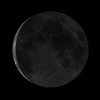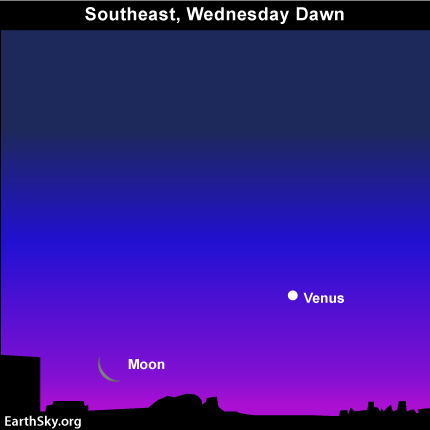Courtesy of EarthSky
A Clear Voice for Science
Visit EarthSky at
www.EarthSky.org

 The thin crescent moon still shines near Venus, the sky’s brightest planet, at morning dawn on Wednesday, March 2. However, you will need a level and unobstructed horizon to catch the moon and Venus low in your east-southeast sky. Look for them over the horizon about 75 to 60 minutes before sunup.
The thin crescent moon still shines near Venus, the sky’s brightest planet, at morning dawn on Wednesday, March 2. However, you will need a level and unobstructed horizon to catch the moon and Venus low in your east-southeast sky. Look for them over the horizon about 75 to 60 minutes before sunup.
Venus, the 2nd planet outward from the sun, orbits the sun one step inward from Earth. Because Venus’ orbit lies inside of Earth’s orbit, we see Venus going through the full range of phases in our sky. However, you need a telescope to see Venus’ phases. At present, Venus exhibits a waxing gibbous phase, and is nearly 72% illuminated in sunshine. By the end of the month, Venus will be 80% illuminated.
Tomorrow morning, Venus shines right at the borderline between two constellations: Sagittarius and Capricornus. Venus is moving out of Sagittarius and into Capricornus. Incidentally, the moon is in front of Capricornus.
Venus is well known for its 8-year cycles. Eight years from now – on March 2, 2019 – Venus will return to almost the same exact spot in front of the backdrop stars, shining – once again – at the Sagittarius/Capricornus border.
Look for the moon and Venus low in the east-southeast before sunrise.
Astronomy Picture of the Day from NASA/JPL
U.S. Naval Observator Astronomical Information center
The York County Astronomical Society
 Print This Post
Print This Post








